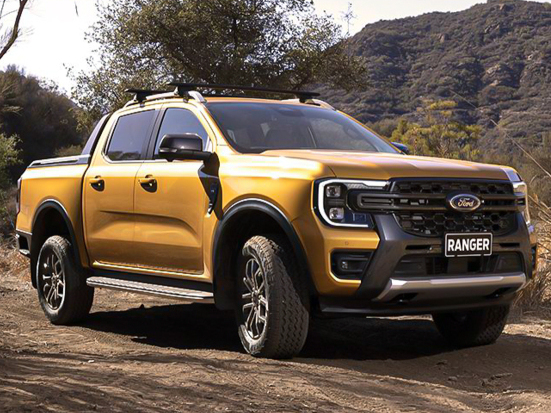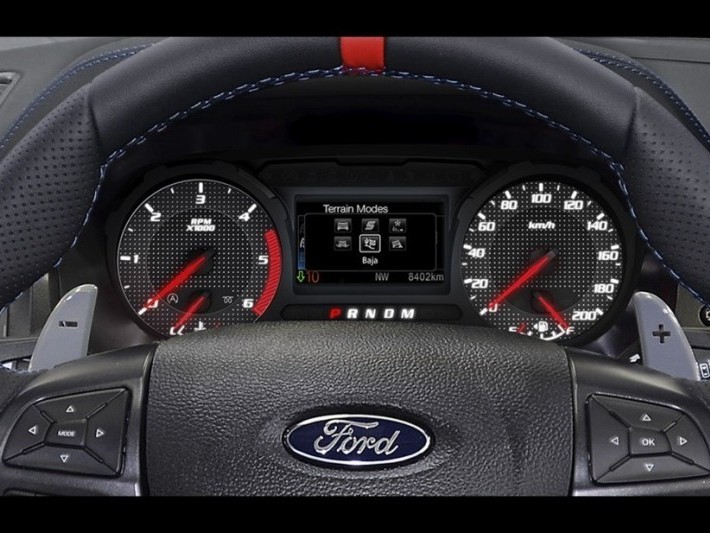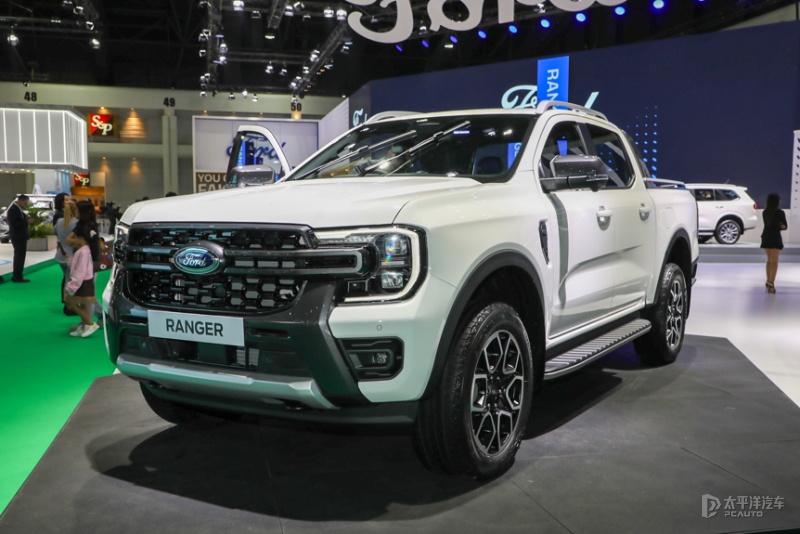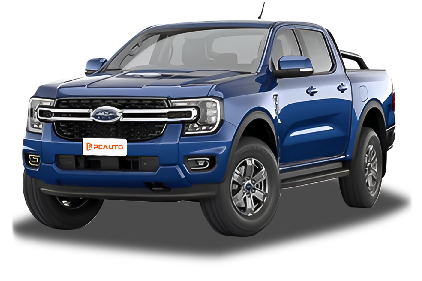Q
how to remove canopy from ford ranger
If you need to remove the canopy from your Ford Ranger, start by parking the truck on a flat, secure surface and gather the necessary tools—think wrenches and screwdrivers. The canopy is usually bolted or clipped down to the bed. Take a look around the bed rails and inside the bed itself to spot all the mounting points. Typically, you’ll want to start by removing the bolts along both sides and at the front and rear. If your canopy has gas struts or support brackets, make sure to disconnect those first. It’s a good idea to have a buddy help out with the actual lifting—canopies can be awkward and heavy, and you don’t want to drop it and cause damage. Once it’s off, keep all the bolts and hardware organized so you can easily reinstall it later.
A quick heads-up: Canopy designs might vary slightly depending on the Ranger’s year or trim level, so checking your owner’s manual or hitting up a Ford dealership for specific guidance is never a bad move. Here in Malaysia’s tropical weather, taking off the canopy is pretty common. A lot of owners do it when they don’t need it to get better airflow in the bed or make loading big items easier. But remember, the canopy does a solid job of keeping your gear secure and dry, so it really comes down to what you need that day. If you’re planning to remove and reinstall it often, keep an eye on the mounting hardware for wear and tear to stay safe out there.
Special Disclaimer: This content is published by users and does not represent the views or position of PCauto.
Related Q&A
Q
What is the resale value of a 2022 Ford Ranger?
The used value of a 2022 Ford Ranger depends on several factors—new car pricing, condition, mileage, trim level, and market demand all play a role in resale value. Currently, pre-owned models retain roughly 70% to 85% of their original price, depending on maintenance history and overall shape. Higher-spec Wildtrak versions typically hold their value better.
Thanks to its dependable performance, practical cargo space, and strong off-road features, this pickup maintains steady demand in the used market, especially diesel-powered variants. Well-maintained, accident-free examples with full service records fetch stronger offers, while modified trucks might turn off some buyers.
If you're thinking of selling, it’s worth getting quotes from multiple dealers or online platforms and checking listings for comparable models to gauge a realistic price range. Keep in mind that pickups generally depreciate slower than sedans, though shifting regulations and economic conditions can still impact resale value.
Q
How much is a 2022 Ford Ranger?
Here’s a natural, human-sounding translation for an automotive editor:
---
**2022 Ford Ranger Pricing Overview**
The 2022 Ford Ranger’s price varies by trim and configuration, with a starting range of roughly RM 98,000 to RM 145,000. Final pricing depends on your choice of powertrain (like the 2.0L turbo-diesel or 3.2L five-cylinder diesel) and trim level (XL, XLT, or Wildtrak). Known for its rugged chassis and off-road capability, the Ranger also packs modern tech—think SYNC® infotainment and advanced driver aids.
A quick note: Used prices fluctuate based on mileage, condition, and remaining warranty, so always check official channels or dealers for the latest quotes. As a top contender in the midsize pickup segment, the Ranger balances daily driving with workhorse utility. Cross-shop rivals like the Toyota Hilux or Isuzu D-Max if you’re weighing options.
---
This version keeps the info clear and engaging while sounding like a real editor wrote it—no robotic tone. Let me know if you'd tweak any phrasing!
Q
What Ford engines are being recalled in 2022?
Ford issued a global recall in 2022 for certain vehicles equipped with the 2.7L EcoBoost V6 engine, including popular models like the F-150 pickup and Edge SUV. The action addresses a potential design flaw in the engine's oil separator that could lead to leaks and increased fire risk.
This proactive recall reflects Ford's commitment to addressing safety concerns before they become problems. Owners can check if their vehicle is affected through Ford's official channels and visit authorized dealers for complimentary repairs.
For drivers of these models, it's smart to regularly check oil levels and inspect the engine bay—catching issues early is always better. While recalls might sound alarming, modern automakers have robust systems in place to protect customers. The key is to act promptly when notified.
To keep your engine running smoothly long-term, stick to Ford's recommended maintenance schedule and use approved oil grades. And hey, keeping detailed service records never hurts—it’s your proof of proper care down the road.
Q
Are there any problems with the 2022 Ford Ranger?
The 2022 Ford Ranger proves to be a dependable midsize pickup overall, though some owners have reported typical niggles. The infotainment system occasionally acts up with lagging or delayed responses – something that tends to improve with subsequent software updates. A handful of drivers also mention slightly jerky transmission shifts at low speeds, though this usually smooths out once you adapt to the driving mode.
Where the Ranger really shines is its rock-solid 2.0L turbo-diesel engine, which delivers consistent performance and decent fuel efficiency, making it great for long hauls or hauling loads. Just remember: staying on top of maintenance is key, especially for diesel models – don’t skip those fuel filter changes and keep an eye on the DPF system.
If you’re eyeing a used 2022 Ranger, pay extra attention to the undercarriage for signs of heavy use, since pickups often handle tough workloads. That said, this truck holds up well for durability and off-road capability. Most quirks are minor and don’t get in the way of daily driving, plus dealerships usually have fixes on hand.
Q
What is the warranty on a 2022 Ford Ranger?
The 2022 Ford Ranger comes with a standard 3-year/100,000-km warranty (whichever comes first), covering manufacturing defects and material quality issues. The powertrain is backed by a 5-year/160,000-km warranty (whichever occurs first), including core components like the engine, transmission, and drivetrain. Additionally, Ford provides a 6-year unlimited-mileage corrosion perforation warranty.
Keep in mind that warranty terms may vary depending on trim levels or promotional offers, so it’s best to check with your dealer for the latest details before purchasing. For pickup trucks, these coverage periods are fairly typical—especially the extended powertrain warranty, which often outlasts those on passenger cars, reflecting the manufacturer’s confidence in durability.
If you frequently use the Ranger for heavy-duty work or off-roading, pay extra attention to the coverage for the drivetrain and underbody components. Also, remember that sticking to scheduled maintenance at authorized service centers is crucial to keeping your warranty valid. Using aftermarket parts or skipping recommended services could void your coverage.
Q
How many miles will a 2022 Ford Ranger last?
The 2022 Ford Ranger is built to last between 200,000 to 300,000 miles (roughly 320,000 to 480,000 kilometers) with proper care and regular maintenance—though actual lifespan depends on driving habits, road conditions, and service frequency. This truck’s tough chassis and proven powertrains, especially the 2.0L EcoBlue and 3.2L Duratorq diesel engines, handle daily city and rural driving with ease. Staying on top of critical maintenance like oil changes, filter replacements, and transmission fluid services goes a long way in keeping it running.
Keep in mind: Rangers are designed for heavy-duty work, so their suspension and underbody components typically outlast regular passenger cars. If you frequently haul loads or go off-road, consider shortening service intervals and inspecting the undercarriage regularly. Don’t overlook electronics either—modern sensors and control modules play a big role in long-term reliability. Always opt for genuine parts and certified technicians to preserve the truck’s condition.
Bottom line? The Ranger sits above average in its class for durability. With proper upkeep, it’s easily a 15-year truck.
Q
Is there a recall on the 2022 Ford Ranger?
Based on current information, the 2022 Ford Ranger did undergo recalls in certain global markets for specific issues—primarily involving potential seatbelt pretensioner faults and loose rear axle bolts, which posed safety concerns. Owners can check their vehicle’s recall status by entering the VIN on Ford’s official website. We recommend staying updated through local dealer notifications or official channels to ensure your truck meets safety standards.
Keep in mind that recalls are standard manufacturer measures to address potential issues—not necessarily indicators of poor quality. They demonstrate proactive responsibility by offering free repairs.
For more details on Ranger maintenance—like diesel engine service intervals or 4WD system care—reach out to an authorized service center. They’ll provide tailored advice to keep your rig running smoothly.
Q
What are common problems with the 2022 Ranger?
**2022 Ranger Common Issues (From an Auto Editor's Perspective)**
As one of the hottest pickups in its class, the 2022 Ranger does have a few common quirks worth noting. Some owners report occasional infotainment glitches—freezing or black screens—but a software update usually sorts it out. The transmission can feel a bit jerky at low speeds, which isn’t uncommon for trucks in this segment. Just keep an eye on the fluid condition during routine maintenance.
The high-strength steel body boosts safety, but you might notice faint creaks around some panel gaps, especially on rough roads. Also, if you’re frequently towing heavy loads, keep a closer check on the turbocharged engine’s cooling system—shortening the coolant replacement interval helps.
The rear leaf springs? Great for payloads, but empty rides get bouncy. That’s just physics, not a defect. Bottom line: None of these are dealbreakers, and most fixes are a quick dealer visit away. Stick to the service schedule, keep the software updated, and you’ll dodge 90% of these minor headaches.
Q
What is the fuel economy of the Ford Ranger 2022?
The 2022 Ford Ranger's fuel efficiency varies depending on configuration and driving conditions. Models equipped with the 2.0L turbo-diesel engine average around 7.6L/100km combined, while the 3.0L V6 turbo-diesel version is slightly thirstier at approximately 8.5L/100km. Real-world figures may differ based on payload, terrain, and driving style.
Diesel engines deliver strong low-end torque, making them ideal for towing or long-distance cruising. With diesel fuel typically being cheaper at the pump, running costs can be lower over time. For city driving, keep an eye on the auto start-stop system—it helps cut down on idle fuel consumption. Regular maintenance, like air filter replacements and using the right engine oil, also plays a role in keeping efficiency optimal.
As a pickup that balances utility and performance, the Ranger's fuel economy sits mid-pack among rivals. It’s a solid choice if you need a versatile workhorse without breaking the bank at the fuel station.
Q
What engine is in a 2022 Ford Ranger?
The 2022 Ford Ranger offers a range of engine options to suit different needs. The workhorse is the 2.0L EcoBlue four-cylinder turbo-diesel, available in single-turbo (170hp/405Nm) and bi-turbo (213hp/500Nm) variants. Featuring high-pressure common rail injection, this mill delivers low-rev grunt and fuel efficiency – perfect for hauling or towing.
Some markets also get the 2.3L EcoBoost petrol engine (270hp/420Nm) with twin-scroll turbo and direct injection, catering to drivers who prioritize throttle response. All engines pair with a 10-speed auto box featuring an electronic rotary shifter and drive mode selector.
Heads-up for diesel buyers: The selective catalytic reduction (SCR) system requires periodic AdBlue top-ups to cut NOx emissions – standard stuff for modern diesels. If you regularly tackle long hauls or heavy loads, the bi-turbo diesel's 500Nm punch (available from just 1,800rpm) makes it the smart pick, especially for mountainous terrain or hot climate operation.
Popular Cars
Model Year
Car Compare
Car Photo
Latest Q&A
Q
Does any car have 1000 hp?
Indeed, there are several production or limited-edition cars boasting over 1,000 horsepower today. These extreme performance machines usually come from top-tier supercar brands or receive specialized tuning—take the Bugatti Chiron Super Sport’s 8.0-liter quad-turbo W16 pumping out 1,600 hp, or the Koenigsegg Jesko Absolut’s 5.0-liter twin-turbo V8 hitting the same figure with race fuel. The EV realm has contenders like the Rimac Nevera, whose four-motor setup delivers a mind-bending 1,914 hp. These models push the boundaries of both internal combustion and electric tech, though let’s be real: that much power demands cutting-edge chassis engineering and brakes just to keep things safe. And let’s face it—you’ll never tap into their full potential on public roads. For most buyers, the sweet spot lies in the 300-500 hp range, where performance and practicality actually make sense.
Q
Are V16 engines real?
The V16 engine does exist, but it's incredibly rare—mostly found in a handful of luxury cars, high-performance concepts, or bespoke builds. Back in the day, Cadillac rolled out V16-powered luxury sedans, and Bugatti experimented with the layout in some of its concept cars. But you’d be hard-pressed to find a modern production car with a V16 today. The thing’s a beast—bulky, heavy, and prohibitively expensive to build, so it just doesn’t make sense for mainstream markets.
For most high-performance applications, V8s or V12s strike a better balance between power and practicality. That said, a well-tuned V16 is a masterpiece of engineering, reserved for extreme machines or halo cars meant to showcase a brand’s technical prowess. The engine’s signature growl and buttery-smooth power delivery have a cult following among gearheads.
If you’re into multi-cylinder exotics, keep an eye on local used-car listings or classic car shows—you might catch a collector flaunting one of these unicorns.
Q
What is the highest HP street legal car?
The current most powerful street-legal car in the world is the Bugatti Chiron Super Sport 300+. Its monstrous 8.0-liter quad-turbo W16 engine churns out an insane 1,600 horsepower, capable of hitting a top speed of 380 km/h—though it's electronically limited to 350 km/h on public roads for safety.
While these hypercars deliver mind-blowing performance, daily driving one requires considering local road conditions and climate. Hot, rainy environments, for instance, can push high-performance tires and cooling systems to their limits.
What's interesting is that electric hypercars like the Rimac Nevera (1,914 hp) and Tesla Roadster (claimed 1,100 hp) are now challenging traditional ICE monsters. With the EV revolution gaining momentum, future horsepower records might well belong to electric vehicles.
For true car enthusiasts, it's not just about the numbers—it's about understanding the engineering behind these beasts. Innovations like active aerodynamics, carbon-fiber monocoques, and other cutting-edge tech are what make these machines truly special.
Q
Can a car have 100,000 horsepower?
The highest horsepower record for production cars currently sits in the thousands—think heavily modified supercars or drag racers. But 100,000 hp? That’s way beyond the engineering limits of even professional racing machines. That kind of power is typically reserved for rocket thrusters or nuclear systems.
In cars, horsepower is capped by factors like thermal efficiency in combustion engines, material durability, and drivetrain load capacity. Even cutting-edge hybrid or electric systems have to juggle battery energy density with thermal management. Sure, there have been wild experimental projects—jet-powered cars or turbine concepts—that briefly cracked tens of thousands of horsepower, but those were either impractical or outright illegal for road use.
For everyday driving, excessive horsepower actually backfires, making handling unpredictable and raising safety risks. That’s why manufacturers prioritize smooth power delivery and efficiency. If you’re into extreme performance, check out local tuning shows or international race events—they’re where the latest engineering breakthroughs often debut.
Q
What car has 6000 horsepower?
Currently, production cars with 6000 horsepower are virtually unheard of in publicly available global data. Such extreme power outputs are primarily found in specialized racing or heavily modified vehicles—like Top Fuel dragsters. These machines run massive supercharged engines burning nitromethane to crack the 6000hp mark, though they're strictly track-only and illegal for road use.
In the realm of road-legal production cars, the titleholder remains the Bugatti Chiron Super Sport 300+, with its 8.0L W16 quad-turbo engine pumping out around 1600hp stock. Even when pushed to the limits by aftermarket tuners like Tuatara, extreme builds might crest 3000hp—still a far cry from 6000.
That said, raw horsepower alone doesn’t define performance. Torque delivery, drivetrain efficiency, and aerodynamics are equally critical. For context, even 1000hp in a street-legal supercar already brushes against the boundaries of physics. Meanwhile, electric hypercars like the Rimac Nevera prove four-motor setups can deliver 1914hp today.
Looking ahead, hybrid tech and hydrogen fuel cells could unlock higher outputs for production models—but not without tackling real-world hurdles like range, thermal management, and daily usability.
View MoreRelated News

2025 Ford Ranger WildTrak launched, the most powerful diesel version in the Ranger lineup
MichaelAug 25, 2025

Is the Ford Ranger V6 about to enter Malaysia?
LienAug 13, 2025

Reviewing the Ford Ranger: The Dual Advantages of Rugged Appearance and Powerful Performance
Kevin WongApr 21, 2025

"Starting from RM 170,888! Detailed Explanation of Ford Ranger's Configuration and Performance, a Synonym for Practicality and Versatility?"
AshleySep 20, 2024

Ford Ranger: A Safe, Reliable, and Economical Choice of Pickup
LienMay 2, 2024
View More


















Pros
Cons